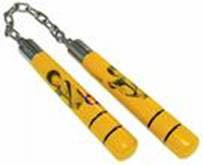

Map of the Piave hydro-basin showing paths of water diversion for hydro-power production and fields’ irrigation. The long array of attempts to transform its watershed into a tractable “organic machine” (White, 1996), managing water extraction, dispossession and distribution, had in fact played a contributing role in unleashing a far wider set of relations across the region, whose outcomes entangles the mountain-plain infrastructural flows in a diffused and complex system of territorial interactions (Figure 1).

The remaining water quantity, which counts for the 10% of its original natural state, once reached the plain is eventually imbibed by cultivated fields at the rhythm of 99 cm/s.ĢUses of the river are multifunctional and, inevitably, management issues surrounding the river are complex. This technological apparatus (Swyngedouw, 2015) generates the 6% of the Italian energy demand and the 60% of the Veneto region one. The machine which makes it the most engineered river in Europe, is composed of 13 dams, 12 artificial lakes, 335 intakes, 30 electric power plants, 200 km of underground and over ground pipes and an infinite number of barrages, sluices and weirs. Having for centuries encouraged human tinkering to exploit its inherent powers, the Piave vast hydrological basin has been ultimately exhausted as a hydro-electric laboratory which regulates the 90% of its waters. It is the only river that, albeit having both two sources and two mouths, completes a long list of actions through different tools and mechanisms, but does not flow, nor gush nor gush or swell anymore. Originally called la Piave – before the First World War changed its feminine name into a masculine denomination, believed to better suit its successful contribution in defending the country at war – is a 222 kilometres long river which exemplifies a fundamental space-time continuum of the Italian identity (Marzo Magno, 2010).

The plain the river cuts through is today one of the most extensive inhabited and economically competitive urban landscapes in Europe: part of the wider Padana Valley, its geographical limits are the Alps to the north and the Adriatic Sea to the south. 1If it is no doubt that the territory is the measurement of human phenomena, the case of the Piave’s hydro-social landscapes proves highly explicative of how water technologies entwine ecology and society in a distinctive mode of social-spatial organization (Boelens et al., 2016).


 0 kommentar(er)
0 kommentar(er)
